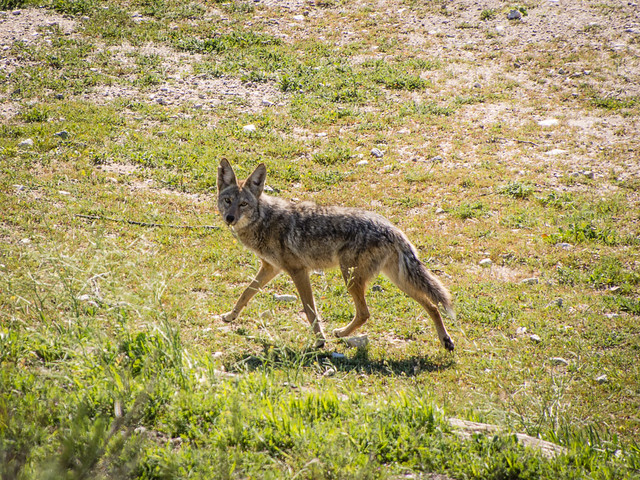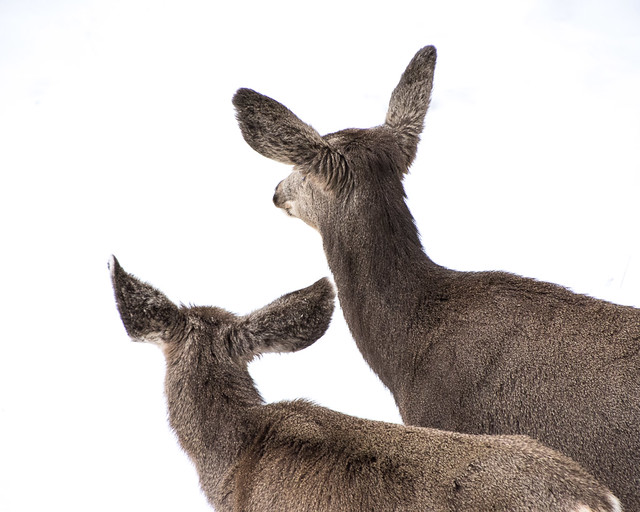Sunday, 10 September 2017
Traffic Calming Measures to Protect Wildlife in the Swale
The Meewasin Northeast Swale (and neighbouring Small Swale) is home to a herd of white-tailed deer, a sharp-tailed grouse breeding ground, endangered species such as the northern leopard frog, and more than 300 other bird and wildlife species. Life isn’t easy for these wild animals. Used to ranging freely from grassland to river, they are now confronted by housing developments and roads.
Roads cross the Swale in five different locations, representing a significant risk for both wildlife and humans. The Canadian Wildlife Roadsharing Resource Centre notes that “Wildlife-vehicle collisions (WVCs) pose a serious risk to people and various animal species across Canada. They can result in severe injury or death for drivers and other road users, along with associated significant costs, up to $200 million annually. . . . The impact on wildlife is just as problematic. Increased land use and human development have further encroached into wildlife habitat areas, diminishing food and water sources for animals, and creating barrier effects between habitats. Equally important, road mortality is a leading factor for over 30 species designated as threatened or at risk by the Government of Canada.”
In a recent presentation to the City of Saskatoon’s Standing Committee on Transportation, the Northeast Swale Watchers said, “While it is a challenge to protect environmental resources within an urban context, much can be done to mitigate the negative effect of human encroachment, particularly if we are to reconsider traditional design approaches. . . . the real solution should involve good design that encourages the driver to reduce speed and watch for crossing wildlife.”
Influence Driver Behaviour
Road Closures
The City of Saskatoon plans to develop Lowe Road to access the proposed neighbourhood north of the Swale. However, Lowe Road crosses the ecological core of the Northeast Swale and further development would severely compromise the integrity and continuity of the Swale. The Swale Watchers recommend that Lowe Road be closed or barricaded for use only by emergency vehicles (fire, police, and ambulance).
The Swale Watchers go on to suggest that “the neighbourhoods north of the Swale could be redesigned to take advantage of access via Central Avenue and the North Commuter Route to alleviate traffic loading on Fedoruk Drive which could then properly serve the neighbourhoods south of Fedoruk Drive, particularly since the Regional Plan is proposing further residential development north of the North Commuter Route.”
Update: The future of Lowe Road has been referred to the Swale stakeholder group and the City of Saskatoon’s administration to report back to the City's Standing Committee on Transportation.
Reduce Vehicle Speed
The Northeast Swale Watchers recommend a 50 km/h speed limit on all roads crossing the Swale and the Small Swale to improve driver response time and reduce the severity of crashes. Compliance, however, can be a problem and police enforcement is expensive. As a result, the Swale Watchers recommend a variety of traffic calming measures.
Swale crossings should be narrowed by eliminating the central median and shoulders, bold zebra stripes installed along the entire length of the crossings, and rumble bumps or strips installed in advance of the actual Swale crossings. “As a temporary experimental project, the City could use rubber speed cushions or platforms which are commercially available.”
In addition, the Northeast Swale Watchers recommend that all swale crossings have signs advising commuters that they are crossing a wildlife habitat area. As simple deer crossing signs are easily ignored, the Swale Watchers suggest “an overhead large sign which reads ‘Entering the NE Swale Environmental Preserve – animals are present. Monitored Speed Limit 50 km/h maximum. Fines Triple.’” Driver feedback signs at both ends of each Swale crossing would remind commuters of their actual speed.
Update: The City of Saskatoon’s Standing Committee on Transportation is meeting on Monday, September 11, to discuss speed limits throughout the Northeast Swale.
Street Lighting
The Northeast Swale Watchers recommend lower levels of lighting (3000K temperature light source) in all swale crossing zones to remind drivers that they are passing through an area with a large wildlife population, reduce dazzle for deer and other animals, and help protect natural darkness in the Swale.
Fedoruk Drive abuts the Northeast Swale for almost its entire length. The Northeast Swale Watchers recommend that all the street lighting along this route should employ a 3000K temperature light source and be located on the north side of the Drive and shining toward the opposite side of the street with no backlighting into the Swale.
Physically Separate Animals from the Roadway
Fencing
Fencing can be effective, but it must be properly installed and maintained and consideration must be given to the species involved. For example, mesh may need to be installed at the bottom to prevent small animals such as turtles, rabbits, or snakes from passing through and there should be opportunities for animals trapped on the wrong side of the fence to escape.
Underpasses and Overpasses
When combined with fencing, wildlife underpasses and overpasses are one of the most effective ways to reduce wildlife-vehicle collisions. An underpass for very small animals has been installed on Central Avenue in the Peturrson’s Ravine area, but there are as yet no plans for additional crossings for wildlife of any size on roads crossing the Northeast Swale or the Small Swale.
Additional Resources
The Northeast Swale: Seeking Solutions
5 Ways to Calm Traffic on a Busy Road
Traffic Calming Guide for Toronto
Wildlife Roadsharing Resource Centre
Wildlife-Vehicle Collision Reduction Study: Report To Congress


